#Stay away from the new coronavirus
Explore tagged Tumblr posts
Text
Also preserved in our archive (Daily updates!)
Video below the main text!
One of the simplest things you can do to protect your health is to keep track of indoor air quality. Viruses spread through the air and accumulate in spaces that are poorly ventilated. By opening a window or running on an air purifier you can reduce your risks of catching an airborne virus. While viruses spread most during the winter, some viral illnesses like COVID are present all year round, and can cause serious short and long-term health issues. This post explains how monitoring and improving indoor air quality can help protect your health through all the seasons.
Viruses can spread through the air at long distances Viruses spread through droplets and smaller particles called aerosols that are expelled by someone who has an infection. This can happen in a number of ways including coughing, sneezing, talking, or simply breathing. The highest risk of catching a virus is when you are close to the source, where there is a greater concentration of droplets and aerosols.
Viruses can also infect people from larger distances because viruses trapped in aerosols can linger in the air for hours, like cigarette smoke. When a room is poorly ventilated, aerosols accumulate, increasing your risk of catching the virus and getting sick, even if you are not standing close to someone who is infected.

Illustration of how droplets and aerosols released during talking can transmit viruses if the person is infected. (Source: J Hosp Infect)
COVID spreads throughout the year Many respiratory virus illnesses like the flu spread predominantly during winter, because they can survive longer in cold and dry conditions, and because people are more likely to gather inside in poorly ventilated rooms during the colder months.
However, COVID can surge throughout the year. COVID peaks occur regularly because the coronavirus that causes COVID is extremely contagious; new variants can emerge quickly; and immunity from previous infections and vaccinations decreases over time. COVID usually surges in winter and summer, however the virus can circulate at high levels at any point during the year.
COVID still causes serious illness While things are different than in 2020 when COVID first appeared, COVID hasn’t gone away. In many countries, COVID is still the most deadly infectious disease. And COVID infections continue to cause long-term health issues for many people.
Anyone who gets COVID can develop Long COVID. Although people with severe initial infections are most likely to develop Long COVID, you can get Long COVID even after a mild initial infection.
Because coronaviruses mutate quickly, you can be reinfected with another variant as early as several weeks after you have gotten COVID. Reinfections can occur multiple times, and the more reinfections you have increases your risk of developing long-term health issues.
People with Long COVID can experience a wide variety of symptoms that can last weeks, months, or years after the initial infection. COVID can increase the risk of developing new conditions or worsen pre-existing ones including heart disease, diabetes, blood clots, neurological conditions, and chronic fatigue.
Even being sick with COVID in the short term is disruptive because most people are infectious with COVID for at least 10 days. That can mean missing days of work, family time, or an important social event.
Simple things you can do to avoid COVID The best way of reducing your risk of developing long-term health issues from COVID is by taking a few simple steps to prevent getting COVID in the first place.
Staying up to date with the latest COVID vaccine reduces your risk of serious illness, infection, and Long COVID. Wearing a mask helps boost your own protection, protects others around you, and works against any COVID variant or other type of airborne virus.
Another effective way to reduce your risk of getting sick from airborne viruses is to improve indoor air quality.
Tracking air quality can help reduce your risk of sickness You can track air quality with a carbon dioxide monitor. When we breathe, we expel carbon dioxide molecules, which accumulate in rooms that are poorly ventilated. A high carbon dioxide reading means that you are likely breathing in a large percentage of recirculated air. If that air contains viruses, that puts you at greater risk of getting sick.
With this knowledge you can take steps to reduce your risk. This can be as easy as opening a window to allow particles with viruses to escape and fresh air to come in. If opening a window isn’t possible, HEPA purifiers or Far-UVC Light systems can help remove particles with viruses from the air.
To learn more about how carbon dioxide monitors can help reduce your risk of getting sick from viral illnesses, watch this video.
youtube
The Aranet team thanks Dr. Lucky Tran for offering insights and guidance on how to reduce the risk of COVID infection. May these revelations empower everyone to make mindful choices and foster well-ventilated environments, enriching not only our homes and shared spaces but also our overall well-being and health. Lucky Tran
#mask up#covid#pandemic#public health#wear a mask#covid 19#wear a respirator#still coviding#coronavirus#sars cov 2#Dr. Lucky Tran#co2 sensor#CO2 detector#aranet#aranet 4#covidー19#covid conscious#covid is airborne#covid isn't over#covid pandemic#covid19#Youtube
157 notes
·
View notes
Text
Muse Special Interview - Matt Bellamy [THE BIG ISSUE (JP) (September 2022)]


“‘The will of the people’ is an amazing thing that should be honoured,and democracy should be something we try to protect. But sometimes it can be something to be frightened of.” MATT BELLAMY - MUSE
Special interview Muse Matt Bellamy
Blending reality and fiction, the latest album from his stay in the US after two full years of a heart-breaking pandemic
On January 6, 2021, the US Capitol was attacked. A crowd of more than 2,000 people, waving stars and stripes, guns and placards in support of then-President Donald Trump, rushed into the federal seat of power. Matt Bellamy was watching the mayhem from his home in Los Angeles, far from the capital Washington, where the attack took place. He had been away from his hometown of the UK for a long time due to the COVID-19 pandemic, and had just begun work on the ninth album for his rock band Muse.
The numerous political upheavals in the United States that had a major impact on the production
“It was a pretty special creative period,” Bellamy recalls of the last two years. “If you’re going to make something good, you have to take what’s happening a bit more seriously.”
When the new coronavirus began to hit the US, Bellamy was at home in Los Angeles with his wife Elle Evans and their dogs. The assumption that he could return home whenever he wanted was now a thing of the past, and Bellamy was no exception. Recalling London’s walkable streets and lush parks where dogs could play freely, he felt shocked, as if he had been banished from his home. “I missed the UK so much, more than I expected,” he says. The album that came to fruition during this period, Will of the People, is Muse’s most ‘American’ album, both musically and thematically. “During the two-year pandemic in Los Angeles, I was immersed in the American way of life, the politics of the country and the events that were happening at the same time. The many turmoil that occurred between the presidential election and Biden's inauguration certainly had a big impact on the production.”
This album was born amidst the pandemic and political unrest. The album, a song about people's will for the future, expresses Bellamy’s feelings about the duality of the crowd. “Democracy must be protected,” he says. “On the other hand, the out-of-control popular will can lead to horrific events, such as the attack on the US Capitol. We should be wary of populism that loudly proclaims the rights of the masses. In chaotic situations, popular will can do good or be abused.”
Muse has maintained a brilliant rock‘n’roll spirit with a “flamboyant is good” aesthetic. That's why the band’s fans have been able to listen to their hard-hitting songs that get to the heart of things without feeling self-conscious. The band’s style, which takes place in a dystopian virtual world, remains unchanged, but the album also has a geopolitical essence that links it to the problems that infest the world today. “By blending reality and fiction, we have the potential for timeless, evocative expression.”
“The album is packed with songs from all the genres Muse has worked with,” says Bellamy. “We had a proposal from the record company about doing a greatest hits album, but we didn't want to do that as a band. So we decided to make a ‘greatest hits’ album with only our best new songs on it.”
In May of this year, Muse held a charity concert in the UK in collaboration with The Big Issue
Muse performed for charity in Hammersmith, west London, for two consecutive days in May this year. The venue chosen was the Eventim Apollo, where iconic British bands such as The Beatles and Queen once played.
The last time they held a live show was back in 2019, before the COVID-19 pandemic. They felt that their performance in front of an audience after about two and a half years had great meaning. So they decided to raise money through their performance for an organisation that works to support people living in difficult situations.
The hall, which can hold around 5,000 people, was filled with fans on both days, and on the second day a special night was held to celebrate the 30th anniversary of The Big Issue UK Edition. Three sellers were in front of the venue selling the issue with Muse on the cover, which reportedly sold fantastically well. Bellamy, who says he has been reading the magazine for more than 25 years, was inspired to work with The Big Issue by an experience in Los Angeles.
“We did most of 'Will of the People' in our studio in Los Angeles,” says Bellamy. “The homeless problem in the city was quite severe and every time we passed downtown on the way to the studio, we had to pass by people sleeping on the streets. This experience definitely influenced the album. The Big Issue also came to mind when we were discussing how we as a band should be involved in the world’s problems. So it was a natural progression for us to collaborate on a show in our home country for the first time in a long time.”
“I first came to London in the mid to late 90s. I used to buy the Big Issue just outside the tube station. When I think back, I always had either The Big Issue or Time Out [a London magazine] in my hand when I got on the tube in London.”

It's the 21st century! Tragedy in Ukraine Recalling the Northern Ireland conflict
Muse are also raising money for both Doctors Without Borders and War Child, which support victims of the war in Ukraine, at a live performance the day before their charity performance for The Big Issue.
“There is a terrible tragedy happening in Ukraine right now. Families are being separated, many people are injured and losing their lives. My heart breaks for the women and children who had to leave their husbands behind and evacuate,” says Bellamy. “I can't believe we are seeing this in the 21st century. The whole world is in crisis.”
The war in Ukraine broke out after a long period of political unrest around the world. Democracy in the US is in dire straits, many countries are grappling with the threat of the new coronavirus, while in the UK the social and economic impact of leaving the EU is becoming more serious. This has led Bellamy to turn his attention to Ireland, where he has his roots. As his mother was born in Ireland, Bellamy is eligible for an Irish passport. He says that the dual citizenship he can acquire by virtue of his roots in an EU member state is a valuable asset for a handful of lucky Britons.
“I'll probably end up applying for an Irish passport too. My mother probably already has one,” says Bellamy. “I was surprised when my mother, who saw the film ‘Belfast※’ with me, said, ‘That's exactly how it was when I was a child’. I was moved by the scenery in the film because my mother grew up in Belfast city.”
There is a key scene in the film where a mother and her young sons hide under a dining table to escape the mob outside. This scene illustrates the fact that the global upheaval we are facing is not so unusual historically. The film reminded Bellamy of his childhood memories.
“Every summer,” he recalls, “I would visit Belfast and the town of Ballymena a little further afield with my mother. At the time, we were still in the middle of the Northern Ireland conflict. I remember there were riots in the streets. My mother and I would sometimes close the front door and hide under the dining room table. The history of my mother's life, the reality she went through, and the memories of what I experienced in that place in the mid-1990s. Thanks to this film, I remember all of that.”
We find meaning in chaos through the means of art and expression.
(Laura Kelly, The Big Issue UK/Editor)
※An autobiographical film directed by Northern Ireland-born Kenneth Branagh about his childhood.
Translator's Note: Given that this is interview was translated from English to Japanese, and then using machine translation to translate it from Japanese back to English, the article may not appear the same as its original English version.
Seeing the difference in the UK cover and JP cover for Muse by The Big Issue, I actually like the JP version more in how they didn't cover it with too many words. It gives off a nice minimalist design.
Also, this article has new information that gave a lot more context to explain Matt's Irish roots. It is sadder than I have expected.
Please do support me via my ko-fi! ☕
#Matt Bellamy#Muse#Muse band#Will of the People era#smol meerkat#my scan#translation#interview#The Big Issue#The Big Issue September 2022
16 notes
·
View notes
Text
Arthur Delaney at HuffPost:
WASHINGTON — For the first year of Joe Biden’s presidency, it looked like Democrats were on the verge of creating the social safety net of their dreams. The coronavirus pandemic had already prompted Congress in bipartisan agreement to boost unemployment insurance and dish out stimulus checks to even the poorest Americans — a significant breakthrough.
Democrats under Biden seized the momentum in March 2021, quickly passing another relief bill that sent a third round of stimulus checks and even created a child allowance, worth as much as $300 per kid, for almost all parents in America. “I think this will be one of the things that the vice president and I will be most proud of when our terms are up,” Biden said a few months later as the payments started. “This has the potential to reduce child poverty in the same way that the Social Security [program] reduced poverty for the elderly.” But the payments, contrived as advance refunds of the child tax credit, were only temporary, and the big plan to make them permanent — alongside new child care subsidies, paid leave for workers and universal prekindergarten — was stymied in part by dubious concerns from within the Democratic Party on how parents would spend the money. And so Biden, who may have hoped to be as consequential a president as Franklin D. Roosevelt, the author of the New Deal and its foundational supports for workers and older adults, has to settle for less — but not nothing. Biden will be leaving office having made his mark on the federal safety net in a number of ways. [...] The higher food benefits have lifted more than 2 million people above the poverty line, while 4 million would go uninsured if it weren’t for the enhanced premium support. The latter policy will expire at the end of the year, however, if Republicans don’t proactively keep it going. In short, while Biden may not have revolutionized the U.S. political economy like Roosevelt, whose reforms banished poorhouses to the annals of history, Biden made policy marginally more favorable to workers and families. [...] In his farewell address this week, Biden touted the overall success of the American economy, which was buoyed by the aggressive relief bill he signed into law, rather than any lasting social policy he’d put in place.
“Instead of losing their jobs to an economic crisis that we inherited, millions of Americans now have the dignity of work; millions of entrepreneurs and companies creating new businesses and industries, hiring American workers, using American products,” Biden said. Unfortunately for Biden and Democrats generally, most people hated the economy of the last four years, thanks to price inflation that may have been the single biggest contributor to President-elect Donald Trump’s victory over Vice President Kamala Harris. Higher prices made people feel poorer, and it’s possible that the retrenchment of federal spending after 2021 did so as well, though no such nuance shows through in consumer surveys. [...] The child tax credit will be a live issue this year. Republicans want to reauthorize their own temporary changes to the credit that they made as part of their 2017 tax bill, which expanded the credit to help cover for other tax changes that were disadvantageous for families. And some Republicans, including Vice President-elect JD Vance, have talked about increasing the credit as a means of encouraging people to have more kids. The Democratic child tax credit expansion, costing more than $100 billion annually, led to the sharpest reduction of child poverty in modern U.S. history. For six months, American parents got to experience the kind of monthly support that is typical in every other advanced country on Earth. Democrats were on the verge of continuing the child tax credit beyond that point, but couldn’t get agreement from then-Democratic Sen. Joe Manchin (W.Va.), who told his colleagues that he feared parents spent the money on drugs.
Joe Biden’s Presidency brought a glimpse of a better safety net.
#Joe Biden#Biden Administration#Child Tax Credit#Food Assistance#Obamacare Subsidies#Stimulus Checks#Stimulus#Unemployment Insurance
2 notes
·
View notes
Text
From the report by Beth Mole, posted 29 Feb 2024:
In a lengthy background document, the agency laid out its rationale for consolidating COVID-19 guidance into general guidance for respiratory viruses—including influenza, RSV, adenoviruses, rhinoviruses, enteroviruses, and others, though specifically not measles. The agency also noted the guidance does not apply to health care settings and outbreak scenarios. "COVID-19 remains an important public health threat, but it is no longer the emergency that it once was, and its health impacts increasingly resemble those of other respiratory viral illnesses, including influenza and RSV," the agency wrote. The most notable change in the new guidance is the previously reported decision to no longer recommend a minimum five-day isolation period for those infected with the pandemic coronavirus, SARS-CoV-2. Instead, the new isolation guidance is based on symptoms, which matches long-standing isolation guidance for other respiratory viruses, including influenza. "The updated Respiratory Virus Guidance recommends people with respiratory virus symptoms that are not better explained by another cause stay home and away from others until at least 24 hours after both resolution of fever AND overall symptom are getting better," the document states. "This recommendation addresses the period of greatest infectiousness and highest viral load for most people, which is typically in the first few days of illness and when symptoms, including fever, are worst." The CDC acknowledged that the eased isolation guidance will create "residual risk of SARS-CoV-2 transmission," and that most people are no longer infectious only after 8 to 10 days. As such, the agency urged people to follow additional interventions—including masking, testing, distancing, hygiene, and improving air quality—for five additional days after their isolation period. "Today’s announcement reflects the progress we have made in protecting against severe illness from COVID-19," CDC Director Dr. Mandy Cohen said in a statement. "However, we still must use the commonsense solutions we know work to protect ourselves and others from serious illness from respiratory viruses—this includes vaccination, treatment, and staying home when we get sick." Overall, the agency argued that a shorter isolation period would be inconsequential. Other countries and states that have similarly abandoned fixed isolation times did not see jumps in COVID-19 emergency department visits or hospitalizations, the CDC pointed out. And most people who have COVID-19 don't know they have it anyway, making COVID-19-specific guidance moot, the agency argued. In a recent CDC survey, less than half of people said they would test for SARS-CoV-2 if they had a cough or cold symptoms, and less than 10 percent said they would go to a pharmacy or health care provider to get tested. Meanwhile, "The overall sensitivity of COVID-19 antigen tests is relatively low and even lower in individuals with only mild symptoms," the agency said. The CDC also raised practical concerns for isolation, including a lack of paid sick leave for many, social isolation, and "societal costs." The points are likely to land poorly with critics. “The CDC is again prioritizing short-term business interests over our health by caving to employer pressure on COVID guidelines. This is a pattern we’ve seen throughout the pandemic,” Lara Jirmanus, Clinical Instructor of Medicine at Harvard Medical School, said in a press release last month after the news first broke of the CDC's planned isolation update. Jirmanus is a member of the People's CDC, a group that advocates for more aggressive COVID-19 policies, which put out the press release. Another member of the group, Sam Friedman, a professor of population health at NYU Grossman School of Medicine, also blasted the CDC's stance last month. The guidance will "make workplaces and public spaces even more unsafe for everyone, particularly for people who are high-risk for COVID complications," he said.
But, the CDC argues that the threat of COVID-19 is fading. Hospitalizations, deaths, prevalence of long COVID, and COVID-19 complications in children (MIS-C) are all down. COVID-19 vaccines are safe and effective at preventing severe disease, death, and to some extent, long COVID—we just need more people to get them. Over 95% of adults hospitalized with COVID-19 in the 2023–2024 respiratory season had no record of receiving the seasonal booster dose, the agency noted. Only 22% of adults got the latest shot, including only 42% of people ages 65 and older. In contrast, 48% of adults got the latest flu shot, including 73% of people ages 65 and older. But even with the crummy vaccination rates for COVID-19, a mix of past infection and shots have led to a substantial protection in the overall population. The CDC even went as far as arguing that COVID-19 deaths have fallen to a level that is similar to what's seen with flu. "Reported deaths involving COVID-19 are several-fold greater than those reported to involve influenza and RSV. However, influenza and likely RSV are often underreported as causes of death," the CDC said. In the 2022–2023 respiratory virus season, there were nearly 90,000 reported COVID-19 deaths. For flu, there were 9,559 reported deaths, but the CDC estimates the true number to be between 18,000 and 97,000. In the current season, there have been 32,949 reported COVID-19 deaths to date and 5,854 reported flu deaths, but the agency estimates the real flu deaths are between 17,000 and 50,000. "Total COVID-19 deaths, accounting for underreporting, are likely to be higher than, but of the same order of magnitude as, total influenza deaths," the agency concluded.
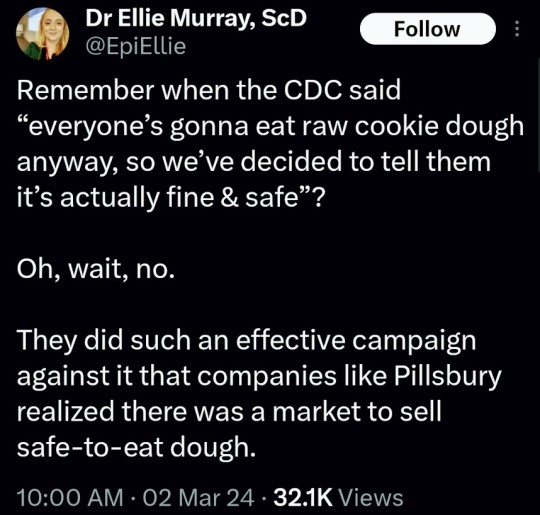

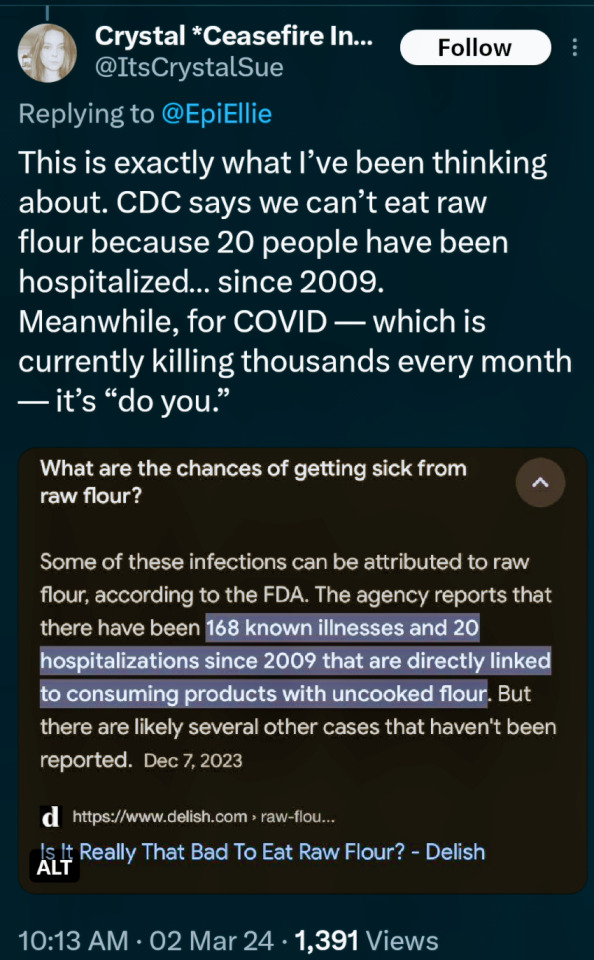
(say no to raw dough: CDC)
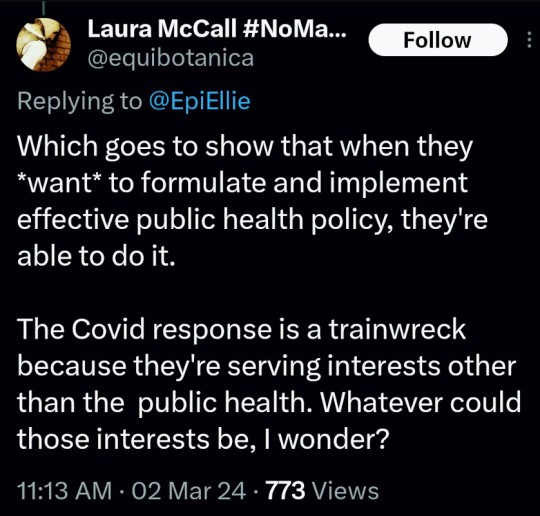
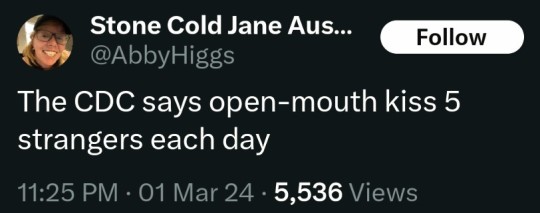
#please stay safe#the vaccines are safe#yes the covid shot is safe#covid is not a hoax#covid causes permanent long term damage to your body even if you're healthy#news#scicomm#science#ars technica#covid--19#coronavirus#beth mole#pandemic#the cdc#centers for disease control#5 day covid isolation#yes you should stay home for at least 5 days if you test positive for covid#Open windows to ventilate indoor space with outdoor air to prevent virus transmission#Wear a mask that doesn't touch your lips#keep distance from others
5 notes
·
View notes
Text
Is COVID-19 Really Over? What's Going On?
Written by: Amanda Diallo
Date: May 23, 2024
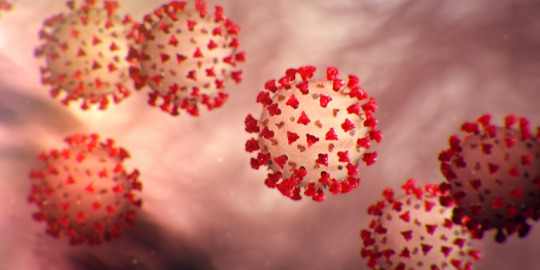
Is COVID-19 really over? Has it gone away? The answer is no. But the pandemic, yes but not the virus. Sorry ladies and gentlemen, but it's here to stay. It's not only here to stay but it's still evolving (more variants).
What is Covid-19 and what are its symptoms? Well, it is the disease caused by the SARS-CoV-2 coronavirus. It usually spreads between people in close contact. Anyone can get sick with Covid-19 and become seriously ill or die, but most people will recover without treatment. Symptoms also includes loss of taste or smell, sore throat congestion or runny nose, nausea or vomiting, and diarrhea.
Researchers in China initially named it 2019-nCoV. On February 11, 2020, it was renamed SARS-CoV-2, and the disease was named Covid-19.
From the beginning of the pandemic (early 2020) we had the first variant (the Alpha), then the Beta, Gamma, Delta, and then the Omicron (2022) which was named the worst yet at that time by doctors and the media. It made most of us worry by getting tested before traveling for the holidays, continue our stay-at-home work, and kept our mask on (not all of us).
By 2023 a few more variants made its way, after the first wave of the Omicron, the European Centre for Disease Prevention and Control announced the BA.2, BA.4, BA.5 subvariants, by Spring '23 it became the XBB series, we also had the EG.5, then by late '23 the XBB, HV.1, and the FL.1.5.1.
Fast forward to now, we are in 2024. There was the JN.1 variant from late '23 into 2024, but now there's a new Omicron subvariant. What to know about the FLiRT variant.
Well, 28.2% of Covid infections in the US by the third week of May, making it the dominant variant in the nation right now. The FLiRT strains have since been identified in several other countries, including Canada and the United Kingdom.
There are also concerns of a summer uptick as we enter the season.
The point is Covid is NOT over. It's unfortunately here to stay. As far as these variants go, it will keep mutating. So, the best way is to get your booster vaccine and go about your day. Masking is a choice now, I don't mask up as I used to, especially if I'm outside. Most are not, but once in a while I see older individuals doing it indoors, and that's okay. When I enter hospitals and my doctor's office, I masked up. The doctor does too. It's a courtesy and safety type of thing.
I receive my vaccine at least twice a year and try my best to dodge the "RONA". I specifically take the Moderna vaccine for better results. Along with the Covid-19 vaccine, one can also take the flu shot the same day as well.
In the city of Wuhan (China), where it all started in late 2019 (not in a wet market by the way), the WHO declared it a global health emergency in March 2020 right before lockdowns.
In February 2021, the World Health Organization (WHO), in a joint mission with China, attempted to investigate the origins of the pandemic. By 2022, the WHO urged more investigation. The recommendation came after a theory that the virus started elsewhere, and not the marketplace in Wuhan.
Another thing to cover about Covid is long Covid. What is it? Click here to read more.
Brain fog is one of the most common, persistent complaints in patients with long COVID.
In conclusion, COVID-19 is not done with us. So, try your best not to catch it (if haven't by now) and yes, you can get the virus more than once.
Recently Dr. Fauci's (retired) former top adviser Dr. David Morens testified about the origins of COVID-19.
It's also known that the COVID-19 pandemic was the deadliest disaster in the country's (US) history. Over 1.1 million US deaths alone have been reported.
Read more on the FLiRT subvariant.
#tumblr#writers on tumblr#covid 19#long covid#coronavirus#vaccines#viruses#decade: 2020s#blog#tumblog
2 notes
·
View notes
Text
The Devastating Impact of Coronavirus on Greek Mythology Girls
Greek Mythology Girls Blog, like many other websites, relied heavily on user-generated content and active community participation. However, with the pandemic spreading across the world, people's lives were disrupted, and priorities shifted. As the health crisis escalated, the interest and engagement of readers dwindled. Many followers faced personal hardships, including health issues, financial struggles, and emotional stress, which understandably diverted their attention away from the blog.
The pandemic's consequences were felt by the blog's contributors as well. Writing and researching content on ancient mythology required focus, creativity, and emotional investment. Unfortunately, the pandemic's anxieties and restrictions made it difficult for writers to maintain their usual levels of productivity and dedication. Some contributors might have faced job losses or increased workload due to shifting work dynamics, leaving them with little time or energy to contribute to the blog.

Another crucial aspect that impacted the blog's reach was the surge in misinformation and sensationalism during the pandemic. With numerous myths and misconceptions about the virus circulating, readers might have been skeptical of consuming content, even if it pertained to mythology. The climate of uncertainty caused people to seek out factual information about the pandemic, often overlooking or dismissing leisurely pursuits like the Greek Mythology Girls Blog.
Furthermore, the pandemic significantly altered online content consumption patterns. People found themselves spending more time on social media and news websites, trying to stay updated on the rapidly changing situation. As a result, niche platforms like the Greek Mythology Girls Blog struggled to compete for attention in an increasingly crowded online space.

The financial impact of the pandemic also affected the blog's operations. Advertisers, who were themselves dealing with economic challenges, reduced their spending on non-essential platforms like the blog, leading to a decline in revenue. As a result, the blog faced resource constraints, hindering its ability to adapt and overcome the challenges posed by the pandemic.
Despite these setbacks, the Greek Mythology Girls Blog attempted to adapt to the new reality. They might have shifted their focus to discussing how ancient myths and legends could provide valuable insights and comfort during challenging times. They could have also used their platform to raise awareness and funds for pandemic-related causes or support their writers who were facing difficulties.
As the pandemic eventually receded, there might have been opportunities for the blog to regain its footing. The enduring allure of Greek mythology and a sense of community amongst its followers could have helped revitalize the platform. Additionally, they could have explored innovative ways to diversify content, engage with readers, and expand their reach.
#greek mythology#coronavirus#coronavirus washington state#coronavirus washington state update#coronavirus vaccine#how coronavirus vaccine works#history of the entire world#coronavirus usa cases#what coronavirus vaccine is approved#history of the entire world i guess#where did coronavirus come from#coronavirus usa#coronavirus documentary#novel coronavirus#coronavirus america#documentary about coronavirus#mythology#history of the world
2 notes
·
View notes
Text
Pandemic
It's been 2 years since my last entry. We've been living through a pandemic and have been in survival mode for most of it. I'll start where I remember...
In February 2020, Owen you were in first grade at Bryant and Maggie you were loving Pre-K at Blossoming Buds Preschool. We had just gone to Kauai with the Cooks and had such a great time! It rained the first couple days but we didn't care. We played in the pool, and went on a little hike (that lasted 10 minutes...it was so muddy we all kept slipping, and just decided to turn around and go back to the hotel!). Auntie Megan and I snuck away for a whale watching tour. Overall just a wonderful trip.
When we got back to Seattle, we started hearing of a novel coronavirus in the news. There had been some cases in Wuhan China. It was making a lot of headlines, but no one was panicking, and we had no idea what was coming next.
Only a couple weeks later, Governor Inslee announced that there were cases in Washington state. We were the first to have cases anywhere in the U.S. School emailed us and said we needed to pick you up early and we'd be home for a long weekend. Mostly it was exciting, we thought we just had an extra school break! Who would've guessed, you wouldn't go back to the building until April 2021!
LOCK DOWN The first stage was distancing. We didn't have to mask yet. The news told us we had to stay 6' apart from one another, and only see people indoors that we lived with. Owen, I remember you and Ian Darby playing so much at that age. You decided to do "distanced light saber fights" outside. You were creative with the problem, but it was still so sad.
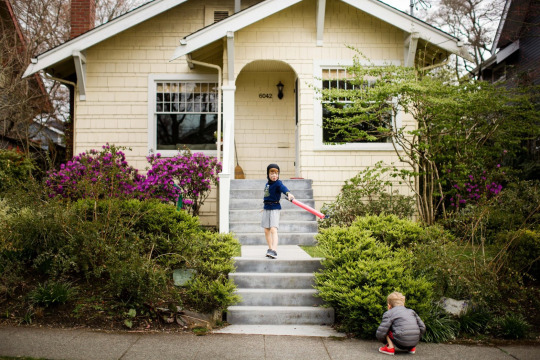
Then we locked down. I think the direction was to shelter in place and only go out if you really had to. I remember thinking I would get in trouble if I went for a walk around the neighborhood! I was so flabbergasted how everything could shut down. Everything was cancel-able! Major sports events, huge businesses and corporations, restaurants, all the kids sports, concerts - cancelled. The world got so quiet so fast. I went out one day to take pictures. Montlake had zero cars. I was able to stand in the middle of it. All the stores in Ballard and Pioneer Square were boarded up and painted by local artists with inspiring messages.
The school district scrambled to respond, but still took a while. Private schools had kids doing online learning within a week. You guys waited a month. I remember Owen had Ms Holley and you missed her so much. She was the best! The moms got together on the Glant's corner (distanced) and decided who would teach what subject. We laugh about that now, we were in survival mode!
The lockdown was hard. It really was house arrest! It made us appreciate human connection and I learned kids shouldn't really be with their parents 24/7. They need friends, teachers, coaches, other experiences outside the house.
As the lockdown continued, the mask ordinances went into place. I remember Katie Haigh sewing some and shipping them to the Villa girls. It felt so strange!
We watched the news hours everyday. It was story after story of healthy people catching the virus, being hospitalized within 24 hours, and dying shortly after. Their passing looked awful - suffocating to death really, with no family members being allowed in the hospitals. Morgues overflowed, nurses and doctors looked beyond exhausted. Friends of ours that were labeled first-responders had to come home, undress in their driveway, immediately go to a shower and disinfect before they saw families.
Governor Insee would do press conferences daily to talk about the rising number of cases. There was a website you could check to see how many new cases there were reported, and the death count. We checked it obsessively, waiting for the downturn.
The fear was so intense. We really felt like if we got too close to a neighbor walking by, or stayed too long in a grocery store, we could contract the virus and be dead in 24 hours. Anxiety was high.
Grocery shopping was an anxiety-ridden outing. They'd actually stagger entry so there were fewer people in the store, with stickers on the floor to keep people distanced. They recommended after grocery shopping, to wipe things down with antibacterial wipes! So antibacterial wipes were out of stock all the time. I remember deliberately going to the store at 6 or 7am and finding a re-stock of antibacterial wipes and feeling like I'd hit the jackpot! We had to leave mail outside for 3 days. There were constant toilet paper shortages. Nuts!
There were good things that came out of it. When the world was facing survival, all the unnecessary focuses vanished. We didn't have to care about frivolous things, and the attitude was "we're in this together, apart". We FaceTimed friends, and Moms did Zoom happy hours. It really felt like the most supportive community time of my life. The animal shelters quickly emptied because so many families found it the perfect time to adopt a dog. The news showed where nature was healing when humans stayed away - canals in Venice had DOLPHINS swimming in them because they were so clear. National Parks had the most wildlife activity ever. Reduced air pollution in India made the Himalayas visible from the cities for the first time in decades.
Still there was a lot of time to kill. We did puzzles, baked a LOT, I tried to catch up on personal projects I'd delayed, EVERYONE purged stuff. Goodwill would close early because everyone was doing the same, and they'd be full.
I tried to get you out where we could - we went to the Mukilteo lighthouse, windermere park (playgrounds were taped off!), rode bikes around an empty UW campus (that still had a Starbucks truck! Lifesaver!). We went to an empty Seattle center and played in the fountains. I got my American Girl doll out of storage for Maggie so she had something new to play with, and set up tea parties in the backyard. My friends and I realized paddleboarding was something we could do distanced.

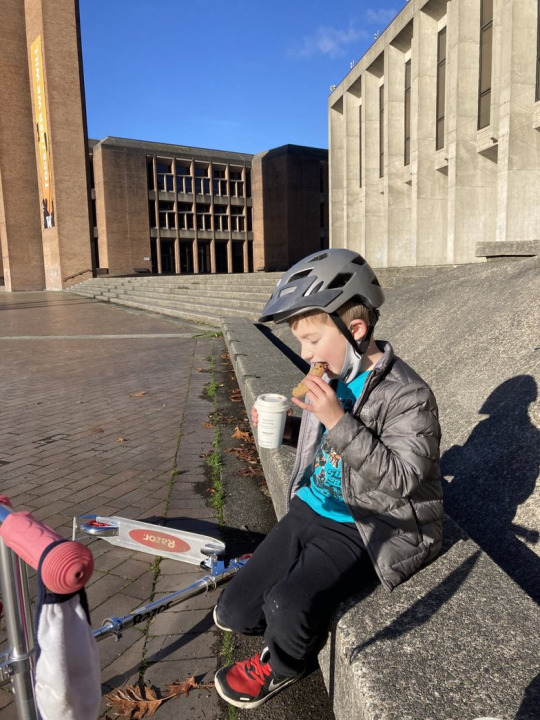
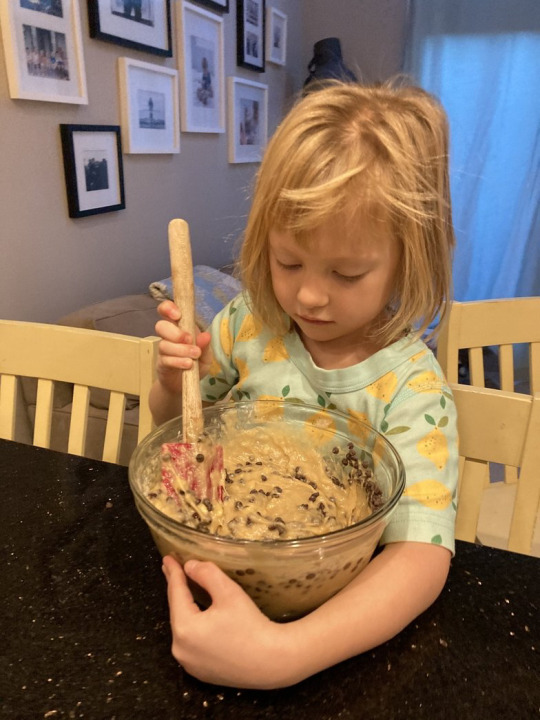
We were just HOME. So much TV watching, scrolling, and hanging around. We rearranged the living room to give you two more floor space, because you had to wrestle out all that energy everyday!
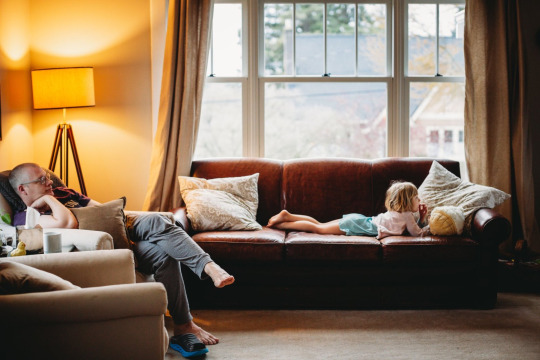
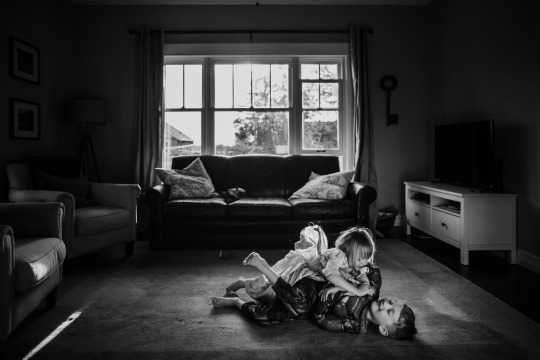
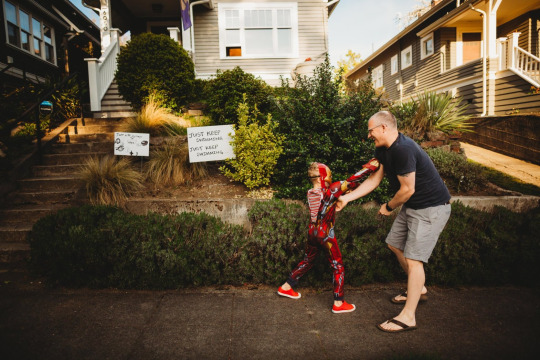
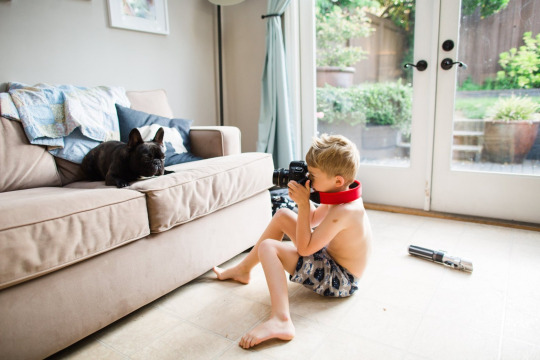
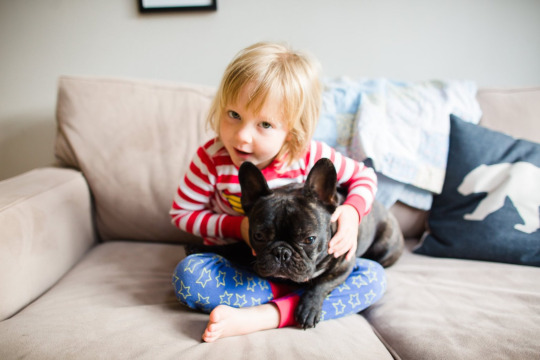
We played outside and waved to neighbors across the street! I remember parents pulling lawn chairs out to the curb for distanced happy hours - us on our side, the Giants on the other.
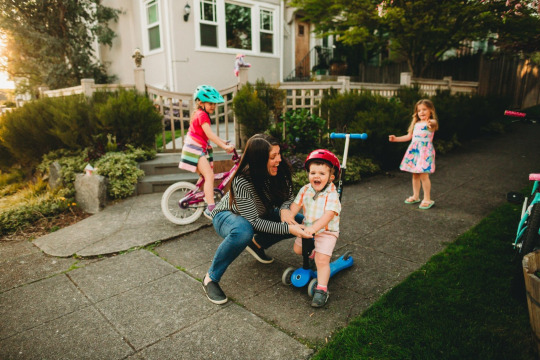
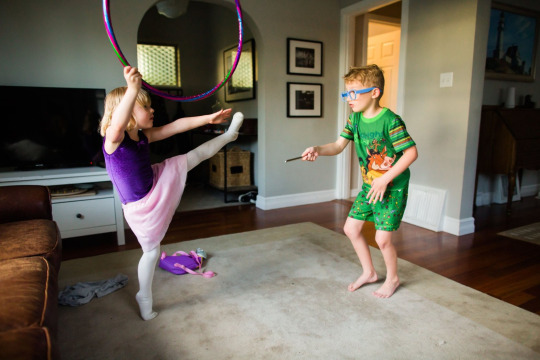
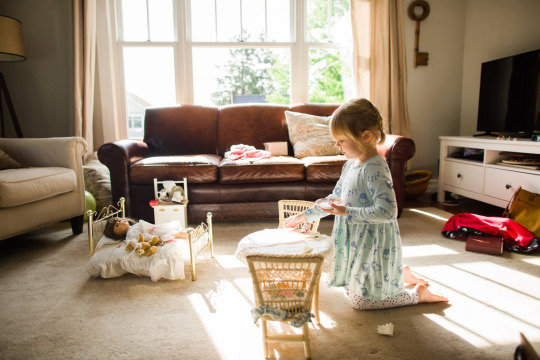
We Zoomed everything! School, happy hours, work. It really was the primary form of communication for months.
In addition to the pandemic, it felt like the hits kept coming. George Floyd was murdered and the BLM movement began. Australia had horrible wildfires. Trump's popularity rose and he was elected in November. Ruth Bader Ginsberg died just before. It just felt like the world was dying, burning, and falling apart all at once.
By December 2020 remote learning was up. It was hard. We did our best but a lot of days I just gave up and let you sign off. We were all struggling with our mental health and I didn't want to push. You were so little (first grade) and sitting still in front of a screen for any length of time to "learn" felt impossible. I remember getting a huge PDF of worksheets, going to Kinkos and having them bound for you and your friends since it seemed easier than remote learning. Dad and I had to keep working, while helping you. I had to cancel all my shoots, so I kept busy by designing photo albums for clients, offering virtual photography classes, and watching you two. I'm so glad we had a big savings account! But also our expenses fell dramatically since we weren't going anywhere or doing anything!
Trump coming into power was the worst. He denied so much, refused to help, and minimized the whole pandemic. Dr Fauci was leading the charge and fighting him tooth and nail. It felt like such a failure of leadership during a war.
In May we took a ferry (staying in the car) and played on the beach at Maria LeCuyer's Whidbey house. She's always loved you two and been so generous sharing her spaces with us. Nana and Gopey drove separately and came with us, still keeping their distance. It felt good to be out!
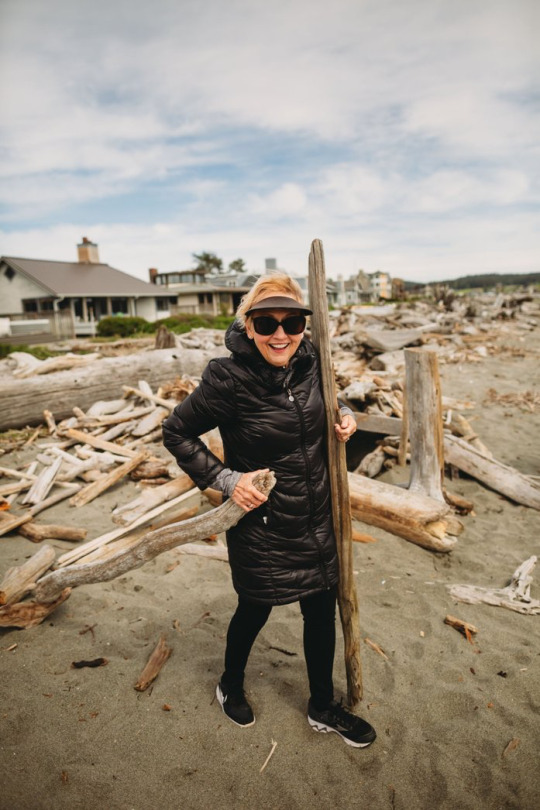
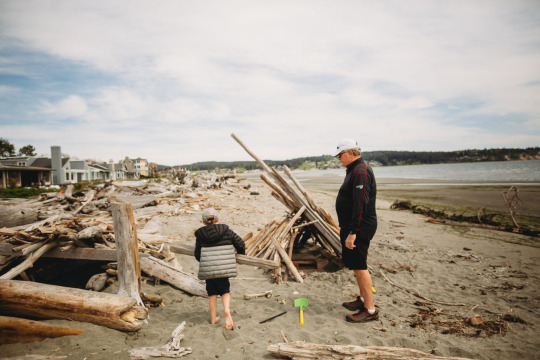
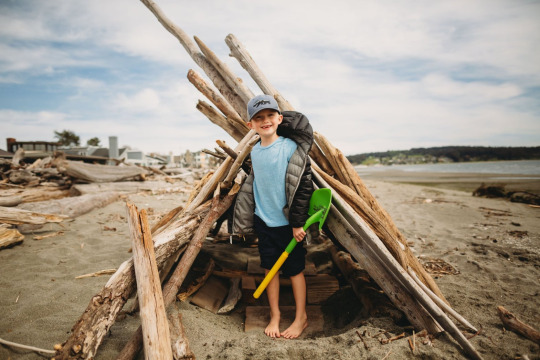
I also took Maggie to Portland for the day to celebrate Lucy's birthday. Megan and I ordered the same outfits so you could dress alike. The party was in the street, again distanced. It broke my heart you two couldn't hug, and we couldn't go in their house. But we took some of my fav photos of you two ever!
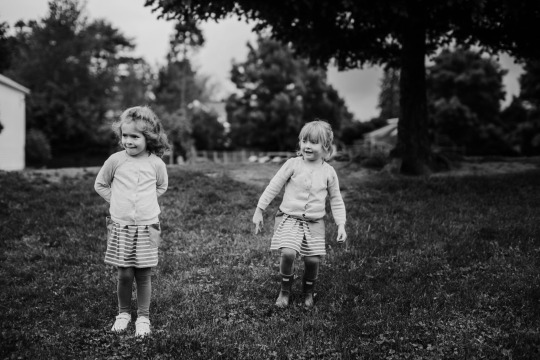


You naturally got close together, keeping you apart was impossible!
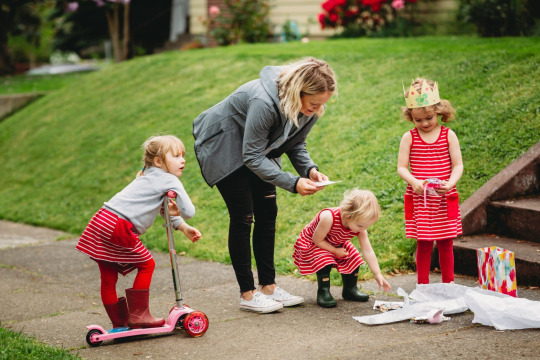
We did a half birthday celebration for Owen and I splurged on a fancy cake because we all just needed SOMETHING fun! ,Maggie graduated pre-k in the parking lot of UW. We circled cars and talked to each other from the windows. Everyone made signs to hang out the windows. It just felt sad. You missed the last half of your Pre-K year. You missed so many things.
Summer was a reprieve. Cases were down so we got to take the dang masks off! Restrictions loosened. You could FINALLY get real haircuts again, we played at the pool, and windermere. We had to test before we got into groups, so going to the testing site at UW was routine. I got a last-minute reservation at Campbell's at Chelan ON the 4th of July! Normally that place is booked 3 years in advance, but cancelations were common since people kept getting sick. We camped with the Cooks at Mt Rainier since no one was comfortable with plane travel yet. It was great.




They had kid kayaks and Owen LOVED them. It was so wonderful to see you two smiling again!

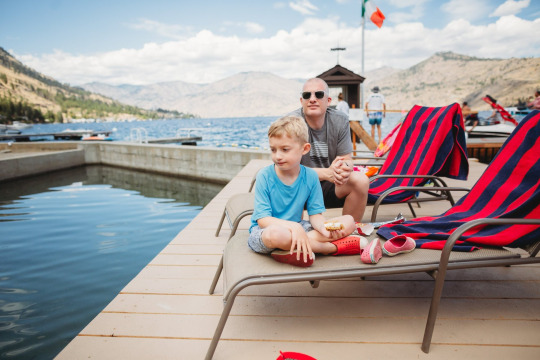
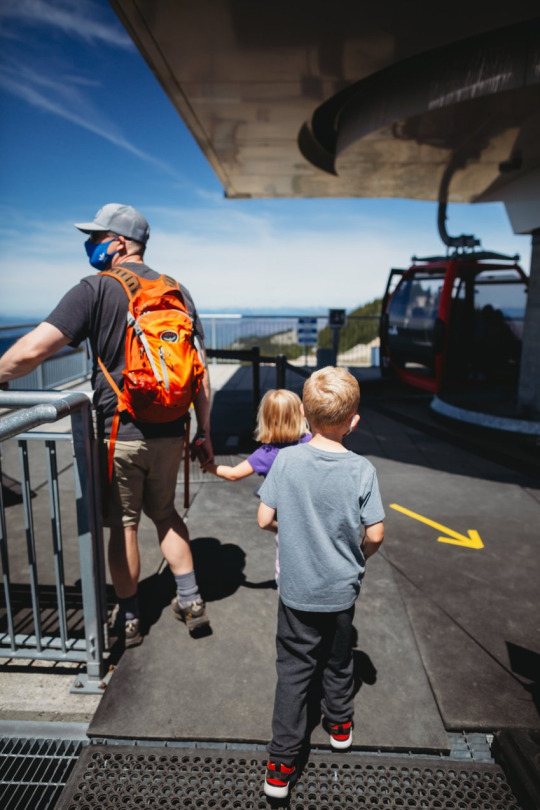
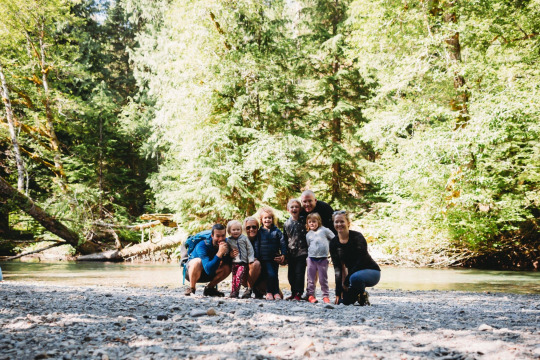

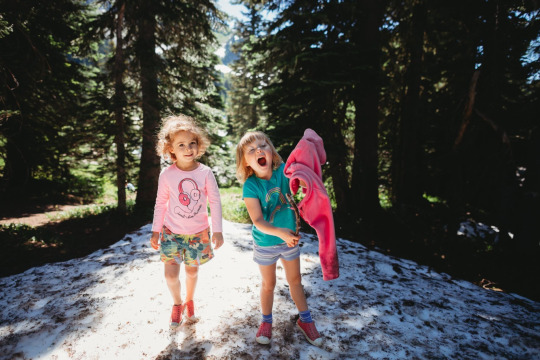
The Cooks came to visit later in the Summer. I remember we still felt cautious socializing with too many people, so we kept to family a lot.

Fall 2020
Remote learning was still in place, and we made the best of it. Right before school started (Maggie's kindergarten year!) she got the chance to go up to Bryant to meet him. It was the first time we'd been there with teachers since February! I went to Target and splurged on school supplies and fun treats for you. I told Dad to take you to the pool while I set up your desks at home. I just wanted you to have the best start to the year that you could.
Beach day at Rosario Beach
Kindergarten
2nd Grade - Ms Duncan
Halloween - had people in the backyard. Was the first group gathering in months. Had a wonderful time! We laughed and stayed up. So life-affirming
November - Biden elected, Trump gone!
Suncadia trip for Erin's birthday with nana/gopey
Found out some grandparents had died. So awful. Katie Chamberlain and boys got Covid. Had to quarantine within their house.
Christmas -garage at Grandma's. Dinner at Nana's. No cousins. No Santa photo. No parties or gatherings. Tried to enjoy the stress-free, laid-back holidays
BACK INTO LOCKDOWN Winter - cases up again, more restrictions, people sort of naturally stayed home again
Snuck out to go sledding. All the places were packed! We found a secret hill by Alpental Empty Pike Place Market
Dad ran a half marathon on his own
NEW YEARS - mental health in the tank. So isolated, bored, remote learning was the pits. Couldn't play with anyone. Went to Whidbey for the day. Done done done.
School photos! Like a light through the window. So fun to see kids and parents, some feeling of normalcy
Big snow - so funny to compare to 2019. Then we couldn't take so many snow days. Now it was like "something to do!". You were out of the house with friends again.
Museums opened up, limited staggered entry. We basically had a private tour of the Burke, and Aquarium!
MARCH 2021 Vaccine!!! Cried happy tears. First feeling of hope in a year.
Cooks visited. So so happy to see them.
Cried, saw friends getting it Privilege, fighting over doses, waiting lists
RE-ENTRY APRIL 5 - back to school! Cleaned up the garden as a family. Masks, distancing, sectioned recess half days - still so hard! not enough time in class. Separated from half your class. Just weird.
Easter! Grandparents both in our house. Such a lovely day
Maggie birthday at Windermere with ponies
Soccer started...just wONDERFUL. Return to normal
Owen mental health struggles, Mom panic attacks. We'd adapted to distancing, worried about being near people. May - first trip to Portland in a long time!
Seabrook. Could FINALY PLAY with friends. No masks
SUMMER - easy times again, pool...with guests! Swim team...it was a hit! Jack Day moved away. Seriously? One more thing
June - heat wave
Backpacking, Ohanapecosh
Planned Chelan and cnaceled day before - family hadn't vaccinated. So politicized, friendships ending.
FALL Back to full day school! Such a relief Ms Holley, Ms Eeds Halloween Party - some people came inside. Such a fun time
NOVEMBER - kids get the vaccine! But over 5. Such a happy day!
Owen birthday - finally could have friends over for a party! Burgers and a movie. So weird to have people in our house again! Things getting better. Birthday parties again
Bought a Peloton
Owen broke his foot
Thanksgiving turkey bowl - first big gathering with friends
DECEMBER
Finally Christmas all together, in Portland. Then Oscar died.
Cases went nuts - Omicron!
NEW YEAR
got Covid! Like the worst game of dodgeball ending. We did okay. learning to ski, learned to skate
HAWAII! Ended quarantine 2 days before we had to leave! Just in time. Best trip ever. Felt like a psuedo end to the pandemic, to covid. We were so ready to get out! No masks for a week, no talk of covid.
SPRING Masks off March 12th!
New puppy
Masks off at school. Return to normal?
Owen - mental health, loss of a friend, of a whole school year, puppy
0 notes
Text
Hey what is it coronavirus or a bird flu is it a two a BOGO stay away from the black family of men from this New York and from this Florida and my hearing what I'm hearing
No immediately leaving the bus station in Jacksonville it came out we need the girls of Houston and Jacksonville to pay yeah it immediately came out like a nipple slip
Yeah and the whole time in the back of my head I'm thinking they didn't find out about the girls of Alabama
Yeah so is it true a BOGO stay away from the black skin family of men from Jacksonville and Pensacola Florida and also the blackskin family man in New York and this New York 2/3... Wow so if we say okay we're threatening the girls down here in Jacksonville or Pensacola Florida New York's going to have to send some girls are going to they're going to have to put their work in would it work
0 notes
Text
Plan For Garden Sheds with Porch
At the point when I was a kid, a property holder had built a brilliant little lodge for his children. We promptly made this our clubhouse and meeting place for every open air experience. This one-room lodge estimated Plans for Garden Shed with yard You might have heard the expressions "she shed" or "man space," yet property holders who fabricate extra living or working space through a cutting edge shed say they have become more useful and appreciate
Shed Plans 12X16 Free | Shed with patio, Lawn sheds, Shed homes
Quite a long time back, I was a little fellow, directly in the center of the time of increased birth rates made by fighters and mariners getting back from The Second Great War. Besides, it assists new organizations with performing a positive evaluation of their field-tested strategies since it covers a scope of themes market members should know about to stay cutthroat. Garden Shed When Leo Babler was brought into the world with an uncommon and dangerous hereditary problem, his folks reshaped their lives, moving to the mountains, working out an undertaking van, and ensuring their child encountered the
Shed Building Made Simple | Shed with patio, Yard plans, Shed plans

A Lanarkshire parliamentarian has upheld aggressive designs to further develop the which incorporate a polytunnel and garden region. "Maybe in particular, The Shed Base is an inviting social climate The space put away for the Learning Garden comprises of a walkway associating the library parking area to the walkway on the primary block of South West Road.
14x14 and 12x12 Wood Shed Kit | Little Garden Preparing Shed | House
Center around the shed base Especially assuming the water level ascents in the garden, you need to ensure that the base of your shed is completely safeguarded. One method for doing this is by adding a sealant between Jan 11, 2023 The Express wire - - Last Report will add the investigation of the effect of Russia-Ukraine War and Coronavirus on this Garden Sheds industry.
0 notes
Text
Also preserved on our archive
Do you have $32,000 for covid treatment? Neither did Nannette, and now her whole family is paying the price for her covid hospitalization. This is why we must mask up: You may be able to afford that cost, but you are just as likely to spread covid to dozens who cannot if you refuse to take precautions, especially when ill.
By Noah Zahn

CHEYENNE — When Nannette Hernandez got COVID in 2021, she didn’t realize how long it would take to recover. Although she was released from the hospital after only a few days of care, she is still suffering from the financial burden that has led to the loss of her job and her home.
At 45 years old, Hernandez and her son, 26, moved in with her mother when she lost her home. The three of them now live together in a mobile home south of Cheyenne. The walls and tabletops are decorated with photos of family members, many of the frames containing photos of her three grandchildren.
Papers were strewn across the coffee table in the living room: bills from the hospital, letters to the hospital, research on how to get financial assistance, one letter denying financial assistance.
Although Hernandez says she tries to keep a positive attitude, her smile faded when she said she often feels hopeless as her debt continues to grow and she is considering filing for bankruptcy.
“They garnish my wages every week, and I owe them more now today than what the judgment was for, and that’s all due to the interest,” Hernandez said. “I’m never going to get through this, you know.” Toys are neatly put away in a corner of the room, behind the couch, for when her grandchildren come to visit on her days off work.
Hernandez has a new job and has health insurance. In addition, she contributes a portion of her wages to life insurance. She said she does this so that she at least has something she can pass on to her family.
Before interest, Hernandez’s bill from Cheyenne Regional Medical Center was around $32,000 after three days of care for COVID and related pneumonia and reduced to $22,000 because she was paying uninsured and out-of-pocket. Between garnished wages and paying for insurance, Hernandez says she only sees at most $12 of her $17.30 per hour wage from working at a deli in a truck stop.
Hernandez said she now suffers from depression as a result of the stress caused by her medical debt. It is difficult for her to work full 40-hour weeks at her job.
However, her smile returned as she talked about how she gets to spend time with her grandchildren, aged 2, 4 and 8, on her days off.
“They’re my light. Oh, they’re wonderful,” she said. “… I stay happy. I don’t let it give me misery, that’s one thing. I might carry it, and I might be right here, always talking about it, but very blessed, very happy, though, still, no matter what.”
Available funding The Provider Relief Fund (PRF) was established in the Coronavirus Aid, Relief, and Economic Security Act (CARES Act) to reimburse eligible health care providers for increased expenses or lost revenue attributable to COVID care.
A companion fund to the PRF is the Uninsured Funds, which made $10 billion available nationally to reimburse providers for treatment, vaccines and vaccine administration costs for care provided to uninsured individuals.
According to the U.S. Department of Health and Human Services, CRMC received $3,145,097 in Uninsured Funds for COVID treatment, accounting for nearly 30% of the Uninsured Funds received by care providers across the state. It is unclear whether these funds were what reduced Hernandez’s bill from $32,000 to $22,000. Her itemized bill notes the reduction as a discount for “self-pay, uninsured.”
Hernandez received her $22,000 bill shortly after she was released from the hospital and was summoned to court when she did not make payments. She did not appear in court, as she said she felt hopeless and afraid and knew she would be unable to pay. As a result, the court ordered the hospital to garnish 25% of her wages and any argument she had that the government should have assisted her financially was nullified.
After her hospitalization, Hernandez was forced to leave her job of 10 years, where she worked as a waitress, and was unable to work for three months while she stayed at home and was on oxygen 24 hours per day, due to COVID complications.
“I would like to see if they could reverse this, it’s not that I didn’t seek assistance. Now I’ll never get out of this, I’m never going to get out of this,” she said. “It started at $32,000. I’ve been paying on that this whole time. I had started working, they started garnishing right away. I owe them more now. What am I paying for? What am I working for?”
Additionally, Hernandez said she applied for and was denied CRMC’s financial assistance program. According to CRMC’s policy summary, CRMC determines whether patients qualify for financial assistance based on their income and household size compared to the Federal Poverty Guidelines from the HHS. In 2021, those guidelines stipulate that the threshold for a one-person household is $12,880 annual income.
“If being an uninsured waitress making $350 a week doesn’t qualify a person for financial assistance under your hospital’s charity policy, I’d like to know what does,” Hernandez wrote in an email to CRMC officials.
Hernandez sent this email to CRMC, the Center for Medicare & Medicaid Services and Wyoming government officials. In nearly two months, she only got a response from CMS, which informed her it never received an application submitted on her behalf for Wyoming Medicaid and she was not on Medicaid at that time.
Hernandez: “The prices, they’re outrageous”
In this letter, she also claims she was overcharged. On her itemized bill, she was charged $2,124.20 per 100 mg vial of Remdesivir. Gilead Sciences, the drug’s manufacturer, set the price of Remdesivir at $390 per vial for uninsured patients. Hernandez was charged for five vials for a total of $10,621 instead of what would have been $1,950 for five vials directly from the manufacturer.
Hernandez was charged $8.01 for each 20 mg tablet of famotidine, an acid reducer. This medication is commonly available over the counter and a pack of 225 20 mg tablets is available on Amazon for just under $9, equivalent to about $0.04 per tablet. At this rate, CRMC’s price for the medication is 19,825% higher than what can be purchased in store or online.
CRMC charged her the same price for each 100 mg tablet of thiamine mononitrate, more commonly known as a B1 vitamin. These can also be purchased in the pharmacy section of most grocery stores. A pack of 100 tablets can be found for $7, or $0.07 per tablet, more than 114 times less than the hospital’s price.
It is common for hospitals to charge more for medications, even if it can be purchased at a CVS or Walgreens, for charges associated with administering the drug to the patient. This may include factors like the doctor’s prescription, the pharmacy charge to fill the order, the transportation of the drug from the pharmacy to the medication unit, administration of the medication from the registered nurse to the patient and documentation that the correct medication was administered on the patient’s record.
However, Hernandez believes an 11,343% upcharge for a B1 vitamin may be a bit too much.
When she initially went to urgent care and got an X-ray scan, she was told to go to the emergency room immediately, and the providers at the urgent care said it was a matter of life or death. Without financial assistance or price transparency as her bills continued to grow, Hernandez felt disenfranchised and marginalized and is now fearful of the system that is supposed to provide care for her and the community. She said she is now afraid to ever get sick again.
“I feel it’s unjust. I should not be living every day with a heavy burden like this,” Hernandez said. “… I’m sure I’m not the only person this has happened to. I know there has to be so many more.”
Price transparency In 2022, the White House reported that one-in-three adults in the United States — nearly 100 million people — have medical debt. It is now the largest source of debt in collections — more than credit cards, utilities and auto loans combined. Data from the 2020 U.S. Census also found that Black and Hispanic households are more likely to hold medical debt than white households.
The U.S. spent 17.8% of gross domestic product on health care in 2021, nearly twice as much as the average economically developed country. However, the Peterson-KFF life expectancy tracker shows that the average American lifespan is nearly five years lower than those in the comparable country average and was about the same in 2022 as it was in 2004, while most other comparable countries’ life expectancies have increased since then.
Marni Carey is the president of Power to the Patients, a nonprofit organization advocating patients’ rights to upfront price transparency from hospitals.
“I get letters every day from people who are fighting medical debt, burdensome medical debt,” Carey said. “… It’s just a horrible place to be driven to. And if hospitals could tell patients in advance what their financial responsibility is, or if patients could look online and see what the cost of care is, they could choose providers that were affordable to them and competition could enter the marketplace and Tylenols wouldn’t be $80, they would be $5. That’s why we need transparency, so patients can have financial certainty when they go into the medical system.”
A February 2024 report from Patient Rights Advocate, a nonprofit advocating systemwide health care price transparency, found that nearly two-thirds of American hospitals were not compliant with the federal Hospital Price Transparency Rule, which took effect in January 2021, including CRMC. This legislation requires hospitals to make their prices publicly available and easily accessible online to help patients understand the cost of care before they receive it.
According to the report, CRMC is compliant with all transparency rules except for negotiated rates, which Patient Rights Advocate measured by whether the hospital posted the charge that the hospital has negotiated with a third-party payer for an item or service. They found CRMC lists 89% of its negotiated rates as “N/A.”
“I couldn’t go into the Cheyenne Regional Medical Center machine readable files and find out if (Hernandez’s) bill was at all correct, because the hospital doesn’t have that, they don’t comply,” Carey said.
CRMC officials declined to comment on this story, citing patient privacy.
“For privacy reasons, we can’t disclose patient medical treatment or billing details. We recently received a letter from Ms. Hernandez and we will review the medical and billing records and provide a response,” CRMC told the WTE in a statement. “As a general matter, please note that sending a bill to a collections agency and potentially sending an unpaid bill through a court process are last resorts, used only when someone does not respond to offers of financial assistance, billing statements and phone calls.”
At the time of publication, Hernandez said she has yet to receive a response from CRMC and never got any offer of financial assistance. The only correspondence she has received after her release from the hospital has been her bills and a letter stating she did not qualify for the hospital’s charitable care program.
No savings left Hernandez said she believes she would have been in a better situation now if she had more savings before she got COVID more than three years ago. She said she did have savings, but she had to burn through those savings when her father, who lived in California, passed and her grandmother, also in California, passed a month later. Between several trips to California and multiple funeral services, she said she had little savings remaining when she got sick.
“My dad’s burial cost took all my savings, everything, because I just wanted my dad to lay in peace, you know, I wanted to bury my father, and that took all my savings,” she said.
“It’s just like a train of events, such an unfortunate train of events in life that people go through. Everybody goes through it, and that was mine. I said, ‘Man, if I would have had all that money held just a little bit longer, I would not be in this right now.’”
#long covid#mask up#covid#pandemic#covid 19#wear a mask#coronavirus#sars cov 2#public health#still coviding#wear a respirator#covid conscious#covid is airborne#covidー19#covid isn't over#covid pandemic#covid19
64 notes
·
View notes
Text
Repost of Covid Blog (2020) - Now discontinues
At the start of 2020, most of us believed it had to be better than 2019. Months later, I couldn’t even recall why we thought 2019 was so challenging.
Early in 2020, rumors began circulating about a fast-moving and deadly mystery virus—the Novel Coronavirus. We now know it as COVID-19. Whispers of a Spanish Flu-type outbreak began to spread as rising death tolls in Asia and Europe caught global attention.
It quickly became clear that the elderly and those with preexisting health conditions were especially vulnerable. Nursing homes were overwhelmed, and hospitals in major cities faced unprecedented strain, inundated with patients suffering severe respiratory issues. ICU beds and staff were pushed beyond capacity.
Emergency workers—on the streets, in hospitals, and nursing homes—became the front-line troops in this war against COVID-19. Governments at every level declared emergencies, shutting down schools, businesses, and public events. Words like “stay-at-home orders,” “social distancing,” and “mask mandates” became part of our daily vocabulary. For months, we stayed indoors, hoping to “slow the spread” and support healthcare workers stretched to their limits.
What began as two-week emergency declarations stretched into months. COVID-19 fatigue set in as the toll on front-line workers—illness, exhaustion, and even suicide—became evident. Even the prospect of a vaccine, which might have been universally celebrated, sparked controversy and division.
As if the pandemic weren’t enough, a tragic incident involving law enforcement in Minneapolis led to civil unrest. Protests erupted, adding another layer of strain on emergency services already grappling with the virus. Days of unrest turned into weeks and months, with cities burning, lives disrupted, and first responders injured or killed.
All of this unfolded against the backdrop of an intensely divisive national election, amplifying the tension and hostility.
For me, the year turned deeply personal when it became safe enough to fly, and I visited my parents in Maine, 1,500 miles away. My father, 75, and my mother, 73, revealed devastating news: my mom had been diagnosed with Progressive supranuclear palsy which can only be described as Parkinson’s on steroids
My mom, the strongest, most independent woman I’ve ever known, now faces a disease that will steal her strength and independence. My dad, her devoted partner, is grappling with the reality that her care may soon exceed what he can manage. Living so far away from them has always been difficult, but now it feels unbearable.
As a retired EMS professional, my instinct is always to help, to rescue, to save. The heartbreaking realization that I can’t do that for the two people who raised me and saved me countless times is crushing.
So, if I seem distant, restless, or irritable, it’s because helplessness doesn’t sit well with me. I’m struggling to navigate the “new normal” that 2020 has forced upon us.
It's safe to say now 5 years later we have a lot more freedom.
Editors Note: My mom passed away after a 5 year battle with Progressive supranuclear palsy. She was a great women and see is missed. You can find her Obituary here: https://www.mchoulfuneralhome.com/book-of-memories/5431176/Gedney-Nancy/index.php?FILogin=1
0 notes
Text
Black and minority ethnic businesses need support to weather the pandemic
Tolu Olarewaju, University of Staffordshire and Jagannadha Pawan Tamvada, University of Southampton
The coronavirus pandemic has highlighted underlying inequalities that ethnic minorities face in the UK. In England, both death rates and hospital admission rates are more than twice as high for Black people or people from a south Asian background than they are for white people.
The poorer outcomes from COVID-19 among the Black and Asian populations are a result of the underlying social and economic risk factors that ethnic minorities face, such as living in overcrowded accommodation, being employed in riskier lower-skilled jobs, having worse access to healthcare, not to mention structural racism.
But among these well-documented racial inequalities, there is another hidden story: the specific plight of Black, Asian and minority ethnic (BAME) business owners who have also been disproportionately affected by the pandemic.
Specific challenges
During the first lockdown in March, many businesses in the UK temporarily closed with the majority of those that were able to operate doing so at reduced capacity with lower turnover. This had significant implications for BAME-owned businesses, which are traditionally concentrated in the sectors worst hit by lockdown such as retail, health and social care, education, restaurants and accommodation.
Before the pandemic, BAME business owners were less likely than non-BAME business owners to obtain mainstream business support and in the early days of coronavirus, nearly two-thirds of BAME business owners felt unable to access state-backed loans and grants, leaving many on the brink of financial ruin.
The economic crisis facing these businesses is aggravated by the fact that they are more likely to hire a considerable number of BAME employees and attract more BAME customers. The significantly higher risk among such groups from COVID-19 implies that these businesses would have had to incur considerable costs to protect their staff and customers.
COVID-19 has also exacerbated pre-existing disadvantages in the business sector. Although there are some exceptions, BAME entrepreneurs on average have substantially lower success rates for starting businesses and see less success overall compared to other entrepreneurs.
Black business owners in particular experience worse outcomes than their white counterparts. Last year, Black business owners in the UK had a median turnover of £25,000, compared to £35,000 for white business owners. The median productivity of Black business owners is also less than two-thirds that of white business owners, and only half of Black entrepreneurs meet their non-financial aims, compared to nearly 70% of white entrepreneurs.
Our research
To help understand better how COVID-19 has affected business owners, we are currently asking British entrepreneurs about their experiences of the pandemic.
So far, we have found a range of options that many BAME-owned businesses have used to cope in these uncertain times. These include raising the prices of certain products to cover the cost of compliance with new regulations, adjusting operations to take account of social distancing, adopting new technology to facilitate day-to-day business activities and venturing into new business endeavours entirely.
Adaptability and the capacity for evolution have been crucial for BAME-owned businesses to keep afloat during this pandemic, especially as restrictions have become localised and three-tier lockdowns have been introduced.
Despite this tendency to adapt to changing times, some BAME business owners have reported that their customers have stayed away for fear of contracting the virus specifically because of the higher mortality rates reported for their ethnic groups.
How the government can help
We must appreciate the concrete action BAME business owners have already taken to protect their customers and staff in this time of crisis. But the government can do more to protect individuals from adverse health and economic outcomes.
State-backed grants and loans should be made more accessible as an incentive to business owners who have incurred additional costs to protect customers and staff. Crucially, the process to obtain them should not be too onerous, which risks putting people off applying. Regional governments should also take care to plug BAME businesses into the supply chains of local projects in response to the pandemic.
As a community, we need businesses to get through this pandemic in one piece, and we must help protect those who are most at risk. That means working specifically with BAME business owners in creative ways to help ensure their survival.
Tolu Olarewaju, Lecturer in Economics, University of Staffordshire and Jagannadha Pawan Tamvada, Associate Professor in Strategy and Innovation, University of Southampton
This article is republished from The Conversation under a Creative Commons license. Read the original article.
0 notes
Text
Coward
Trigger Warning: Fatpobia. Blood. And Coronavirus. I tend to make my characters look bad.
Some people admired the Gur Monster Hunters I made up. Might do a write up of my characters in this Batstarion fic in the next post.
****
She was at the grocery store. Her cart carried her shopping bag trolley. She was looking at videos of fruit bats while she got here.
Especially one that was mouthing a banana for views. She took a small bunch to add to her cart. She was then looking at the quart cases of blueberries and blackberries.
Then someone caught her attention.
“Well if it isn’t the Fat Fuck Nessie,” they said.
She looked up as her name was called. It was Ken, with his new highly supermodel-like girlfriend looking back at her.
“My name is Vanessa,” she replied with a stern look at him.
“But Fat Fuck Nessie has a ring of truth to it,” Ken stated and looked at the fruits she was buying.
“Ken,” the girlfriend asked, “do you know her?”
“Nah,” Ken replied, “she’s just a lazy fat fuck.”
Ken had his own life. Why did he interfere with her simple shopping adventure? She wanted to go home. Right now.
Ken looked at Vanessa one last time.
“You know if you were down to 100lbs,” Ken said, “you’ll probably be worth the fuck. Come on Katsy, we gotta make sure she doesn’t take all the McCain Deep and Delicious cakes for herself.”
She stayed quiet as Ken and Katsy left her alone. Tears were running down her eyes. Sure, Ken had finally moved on to another girlfriend. He was glad to see Vanessa in misery.
Why can’t she move on too? Why did it fucken hurt that everyone was happy and not her? Why did he have to show up?
Maybe you are a fucken coward.
Ness, you have a bat to feed. Focus on that.
She put the berries in her cart and with her head lowered, trying to hide her tears, and headed to the checkout counter with her three items. Bananas, blueberries, and blackberries.
Least she could make the bat happy.
****
The white bat flew out of the bat house. The bat took a seat on the outdoor chair and stretched his wings. Mists spun around said bat, morphing back into The Vampire Ascendant.
Looking out of the balcony, he was safe from those moronic monster hunters.
As his new found powers, his curiosity of this apartment can allow him to enter buildings. He did not need his prey’s permission. He opened the balcony door and entered the small place. He seemed to be in the living room quarters. His eyes gazed into the area, whereas a kitchen and bathroom was there. The last room was probably the owner’s bedroom.
Curiously, the vampire ascendant ventured to the bedroom. He wanted to get an idea on who lived here and created the badly done bat house. Perhaps he should thank them for saving his ass from monster hunters. It was the least he could do for them.
Inside was a room that perplexed him. Yes, there was a bed, a closet and dressers. There were also figurines humans waste to showcase and a collection of plush toys. Touching one of the plush toys, the vampire ascendant pondered if this room belonged to a thirteen year old girl. Someone that dreamt of being swept away by a handsome Prince.
Well, he wasn’t no Prince Charming, especially with his sparkling sharp fangs.
He noticed a garbage pail that had bloody gauzes covered in blood. He picked it and took a small whiff on it.
It was the same blood that was in the bat house that he was in.
Now he really wanted to learn more about his savior. Their blood smelt like the finest brandy he tasted.
Though, where are they? When will they return?
Sitting on the bed, he turned to see there was a book on the nightstand. Curiously, he picked it up and looked into it.
Indeed the person who lived in this apartment is a woman. She had pictures of someone named “Ken”, but his face had a red X over it. It seemed this person was important to her. Oh humans. They love to stir up drama.
Still in the book, there were no self portraits of said lady. He could relate to not knowing what he looked like. The profane ascension ritual did bring his reflection back. He can see why he was so perfect to lure prey for his old master.
His old and very dead master. Thanks to him and 7000 souls, he was living his lavish life as The Vampire Ascendant. Perhaps, he should show pity to his old master.
Nah.
****
The hunters were scavenging the local park, looking for any signs of a bat sighting. The locals thought that the group of five hunters assumed they were a bunch of larpers. Adults who enjoy role playing like they were in the Middle Ages. They didn’t think the weapons they had were actually real.
Their boss was annoyed. How can one white vampire bat survive in the city? That vampire was smart. Most of the bat population took a nosedive a few years ago, hence no one would dare confront a bat, vampire or not. People were told to stay away from them.
Which made the team frustrated with their search. That vampire could be in the cracks of the city, preying on a new meal.
It pissed the boss off. That vampire is getting away with world domination at his fingertips.
“Boss,” one hunter exclaimed, “we’re not going to find that bat anytime soon.”
Their boss was annoyed by the news. He wanted to stop anyone from becoming his prey. Thanks to the coronavirus years ago, finding a bat in the city was going to be harder than finding a needle in a haystack.
The boss turned to his team.
“Fall back,” he said, “we might need the news to cover this for us. It sucks, but we must wait for a bloodless victim.”
Biting his lip, he hated that someone would die again at the hands of that vampire.
There was nothing else the group could do.
0 notes
Text
The Curious World of Gold Prices: FintechZoom's Views

Introduction
Always a major commodity in the financial markets, gold serves as a safe refuge during economic crisis, a hedge against inflation, and a basic component of world reserve currencies. Platforms like FintechZoom provide real-time insights and analyses priceless for traders, investors, and economists both as the financial terrain changes. We will investigate the elements driving gold prices in this blog, look at current trends, and learn how FintechZoom could be a very useful tool for people engaged in the precious metal market.
Gold's Historic Significance
From its use in ancient civilizations as money and jewelry to its part in contemporary financial systems, gold's appeal stems from past. Gold has long been a consistent source of value, holding worth over millennia. Unlike fiat money, which might be devalued by inflation and other economic events, gold's inherent value stays rather constant.
Aspects Affecting Gold Prices
Economic Indices: Economic data greatly shapes the value of gold. Important markers are GDP growth, employment numbers, and inflation rates. Investors swarm gold as a safe haven during times of economic uncertainty or downturns, so driving up its price.
Monetary Policy: The gold market depends much on central banks. Gold prices might change depending on policies on reserve requirements, money supply, and interest rates. Low rates, for example, often lower the opportunity cost of owning gold, which increases its appeal.
Geographic Events: Geopolitical Gold prices can vary greatly depending on political unrest, wars, and world conflicts. In geopolitally tense times, investors see gold as a safe investment.
Value of the US dollar has a notable inverse relationship with gold prices in terms of fluctuations. For foreign buyers, a stronger dollar increases the cost of gold, so lowering demand; a weak dollar has the reverse effect.
Supply and market demand: The price of gold is directly impacted by demand from sectors including jewelry, technology, and investment as well as by mining output and recycling's effects on supply.
Recent developments in gold prices
Gold prices have been rather erratic in recent years, shaped by different worldwide events and economic policies. Let's review some important patterns:
coronavirus 19 Pandemic: The worldwide epidemic set off hitherto unheard-of levels of economic uncertainty that drove gold prices skyward. Fears of inflation drove investors toward gold as central banks carried out bold fiscal stimulus and monetary easing.
Concerns about inflation: Significant pressures on inflation resulting from post-pandemic recovery Though the link is complicated and affected by several factors, including real interest rates, gold, usually considered as an inflation hedge, has benefited from these worries.
Technological Advancements: Blockchain and digital gold trading platforms among other financial technology innovations have made gold more available to a wider audience. These developments have improved the gold market's transparency and liquidity.
Many central banks—especially those in developing nations—have been building more gold reserves. Supporting gold prices, this trend shows a diversification approach away from the US dollar.
Gold Price Insights Using FintechZoom
Leading venue offering real-time financial news, data, and analysis is FintechZoom. For those who invest in gold, it provides several tools that might improve decision-making:
FintechZoom guarantees investors have the most recent information at their hands by offering up-to--minute gold price updates. Those who trade short-term or make quick investment decisions depend on this ability.
With regard to several economic indicators, geopolitical events, and market attitude, the platform provides in-depth study of gold price fluctuations. Detailed studies and expert analysis enable investors to grasp the fundamental causes influencing gold prices.
By means of historical gold price data, investors can spot long-term trends and tendencies. Those who want to make wise decisions depending on past performance and cyclical behavior of gold must have this knowledge.
FintechZoom compiles pertinent news and events possibly influencing gold prices. Anticipating price movements depends on keeping up knowledge of world events, central bank policies, and economic developments.
For traders, FintechZoom provides a selection of technical analysis instruments including trend lines, charts, and indicators. These instruments use technical signals and price trends to help find possible points of entrance and exit.
Techniques for Allocating Gold Funds
Investing in gold calls for a calculated approach based on long-term goals as well as present possibilities. Investors should give these some tactics some thought:
Purchasing physical gold in the form of coins, bars, or jewelry is a conventional approach of investment. Though it offers a physical benefit, storage and insurance expenses should be taken into account.
ETFs for Gold: Mutual Funds Without having to physically handle it, mutual funds and exchange-traded funds (ETFs) expose to gold. These financial instruments offer liquidity and diversification advantages as well as track the value of gold.
Investing in companies engaged in gold mining and production provides a leveraged view of gold prices. Still, it's important to evaluate these companies' geopolitical and operational risks.
Futures and Options: Contracts offering a means of gold price movement speculation allow sophisticated investors. These derivative instruments carry more risk and call for a strong awareness of the market.
Thanks to fintech innovations, investors may purchase and sell fractional ownership of gold on digital gold platforms. These sites provide less entry requirements and convenience.
The direction of gold prices:
Given the several elements influencing gold prices, it is difficult to project their future. Still, several patterns will probably affect the market:
Sustainable and Ethical Gold: Growing knowledge of ethical and environmental problems in mining could stimulate market for gold derived sustainably. Investors are growing more aware of how their choices affect the surroundings and society.
Blockchain technology integration in gold trading might improve traceability and openness, so improving the market efficiency. Digital gold platforms probably will become more popular.
Monetary Policy Shifts: Particularly in reaction to inflation and economic recovery, central bank policies will always be very important. Any notable modification in monetary policy or interest rates could affect gold values.
Global Economic Conditions: Investor attitude toward gold will be influenced by trade conflicts, geopolitical stability, growth possibilities, and state of the global economy. Gold is probably going to be a preferred asset in unsure times.
Final Thought
Still a great value in the financial markets, gold provides inflation and economic uncertainty protection. For investors trying to negotiate the complexity of the gold market, sites like FintechZoom offer insightful tools and analysis. Understanding the elements affecting gold prices and using technology developments will help investors to make wise decisions and maximize their portfolios.
The interaction of economic policies, technological developments, and world events will always help to define the gold market going forward. Maximizing possibilities in this ever-changing terrain will depend mostly on keeping informed and flexible.
0 notes
Text
Re-inventing The HR Leadership Development Programs in Post COVID-19 Pandemic

The outbreak of the coronavirus pandemic disrupted our lives in the way we haven’t imagined. We’re getting adjusted to the new normal practices like social distancing, sanitization and the new work environment. All this put together brings HR a whole new set of challenges to redefine their job roles. Many companies constantly moved their work environment virtually at a faster rate and scale.
All the face-to-face collaborations and joint works are now transformed to e-mails and video conferencing. HR professionals are not just given an additional opportunity of taking care of the paperwork but providing solace for numerous workers. Their jobs extend in keeping their employees productive, connected, engaged and motivated too!
Let’s open the curtain to explore the roles they are just waiting to step in due to the new virtual normal that steps in. This could also mean the change in dimension of the jobs that starts from the onboarding practice, rewards and recognition policies, engagement initiatives, exit processes and so on.
Make Employees Utilize the Opportunity
Time is the sparse thing that we have during this outbreak, because all the social gatherings like birthday parties, cinema, sport club, bar, gym, festivals, concerts have been paused for a while. HR should ensure that every employee of their organization should make use of this extraordinary time and upskill or reskill themselves.
Marking Speed and Innovation as Key
We know that the coronavirus disrupts the way we work. The working environment in the new normal is more virtual than the traditional office setup. Due to this, many routines got interrupted drastically to form new process flow and procedures to fulfil our daily tasks and activities in the organization.
Small and medium organizations suffer from the adaptation of slow procedures, difficult bureaucracies and very fluid hierarchies. Employees can work without direct supervision. To cope with the challenge, HR should ensure this change as a positive aspect, as to give each employee a space for innovation.
Helping to Reconnect
We all need to modestly accept that we, as humans, do not have control over so many things that exist. ‘We are all in together in this by staying apart’ should be our mantra for the next year at least. Uniting people together to create awareness and initiating wellness policies to reach every employee’s desk. Creating more coherence to manage all the people and keep them up with the same charisma is the major challenge that every HR professional faces now.
Re-inventing the whole new process with the cleaner environment, virtual process flow, excellent onboarding experience and delivering all the mandated HR services without any hassle.
Digital technologies could be a savior by this time, the only way to operate efficiently is in a remotely distributed environment. Huge burden of employee visas, employee travel, leave policy management, payroll management, WPS file generation is all done in one place at HRBluSky to ease the challenge faced by the HR these days. Check it out right away!
0 notes